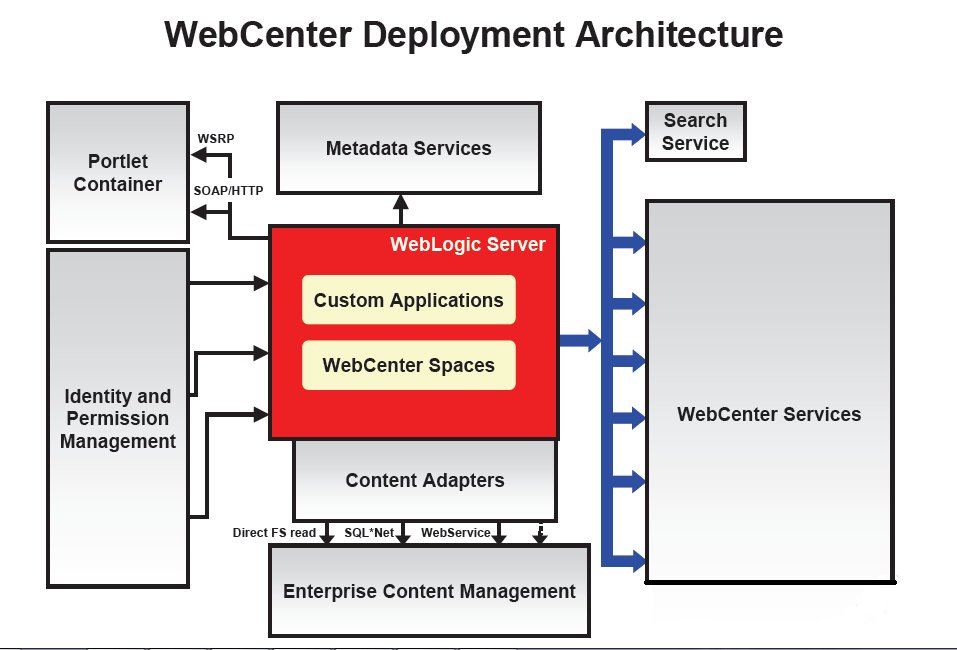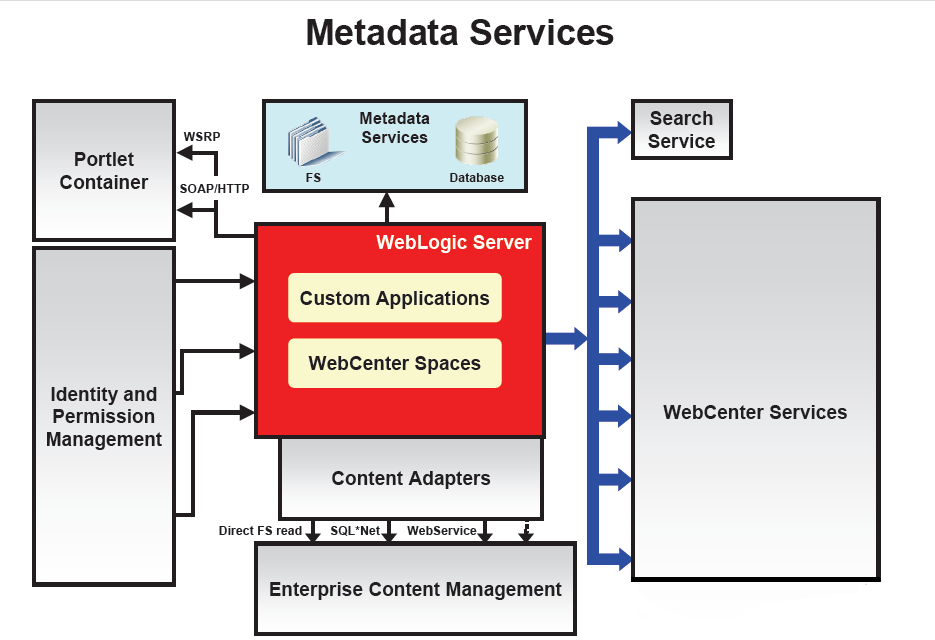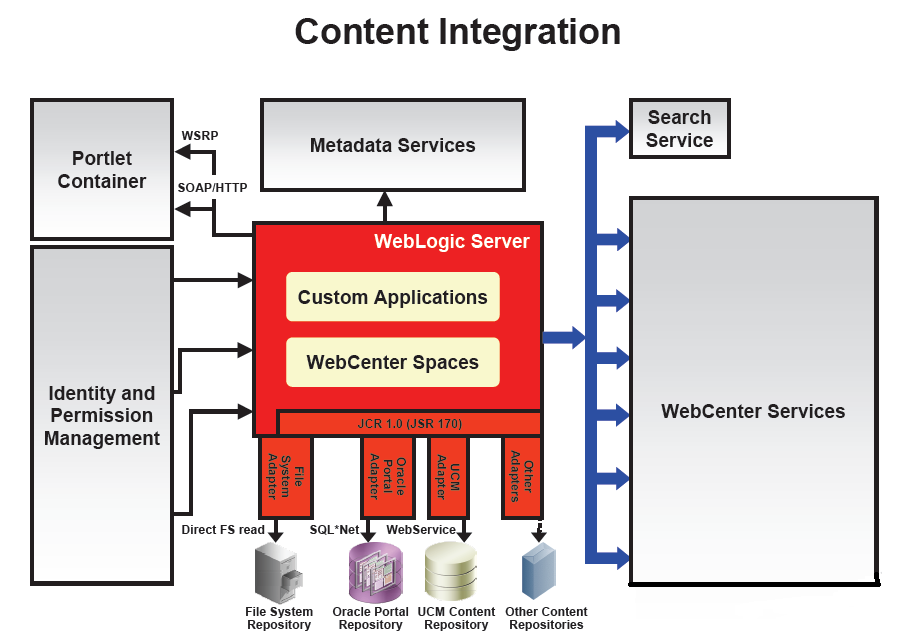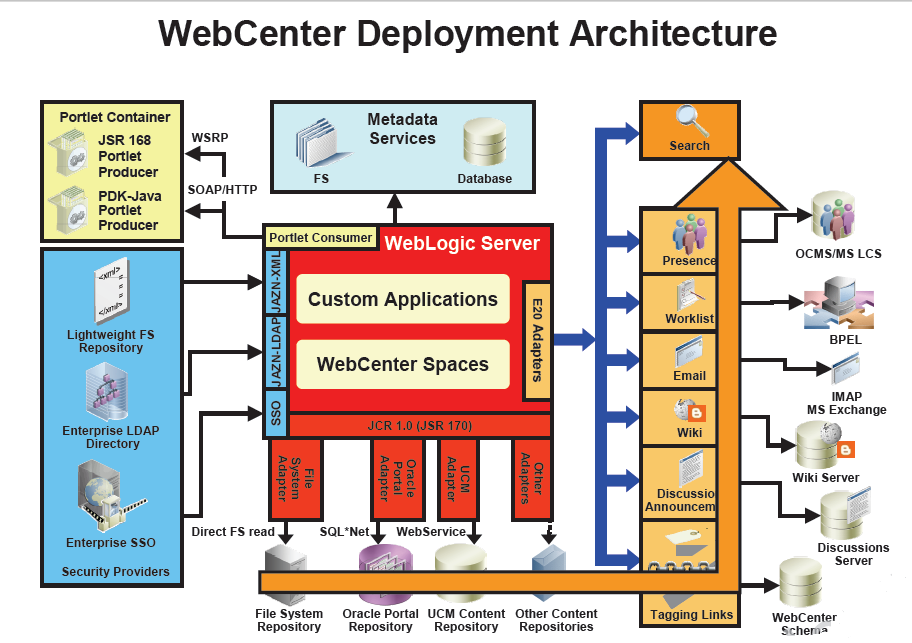The main components of the deployment architecture are:
Portlets :
WebCenter Services
Search Service
Identity and Permission Management :
• WebLogic Server
• Portlets deployed in Portlet Container
• Metadata storage for customization information
• Enterprise Content Management solution with Content Adapters
• WebCenter Services
• WebCenter Search
• Identity Management
WebLogic Server, which is a Java EE–compliant application server, is at the center of WebCenter. WebCenter applications are Java EE applications that are deployed to WebLogic Server. WebCenter Spaces is a prebuilt custom application using WebCenter Framework and Services.
WebCenter applications can consume portlets. Portlets are deployed into a Portlet Container and are accessed by various HTTP-based network protocols such as WSRP and SOAP. Oracle WebCenter supports several portlet APIs such as JSR 168 and PDK Java.
Metadata Services :
WebCenter applications can be customized or personalized at run time. Customization data is stored in Metadata Storage, typically in a database schema, but for development purposes it can be stored in the files of a file system.
Content Integration :
Oracle Content Integration strategy is based on Java Content Repository standard (JCR 1.0 or JSR 170). This API provides uniform access to various content management systems.Oracle WebCenter supports several content management systems, such as file system, Oracle Portal, and Oracle Universal Content Management.
Oracle provides adapters to each of the supported content management systems, which implement JCR 1.0 API on top of the content management system’s API and access protocol.Oracle WebCenter also supports third-party content management systems, such as Lotus Domino, SharePoint, and Documentum, by providing an appropriate content adapter.
Note: File system–based content management is recommended only for testing purposes.
WebCenter Services
WebCenter applications can use a wealth of Web 2.0 services. This slide shows services provided with WebCenter. Each of these services is accessed by an adapter and uses a unified connection description. Many of the services require a back-end server.
Search Service
WebCenter applications can use a global search service, which searches in the content management system and also in the services’ data, such as forums on a Discussion server or tags associated with various objects.
Identity and Permission Management :
Users of WebCenter applications are stored in identity management systems. WebCenter supports a range of identity management solutions, including a simple file-based user repository, industry-standard LDAP servers, or various Single Sign-On solutions.
Application-specific permissions are also stored in this system.Web 2.0 services are typically wired to the same identity management solution used by the custom applications. Various protocols ensure secure identity propagation between custom
applications and the services.








Comments
Post a Comment